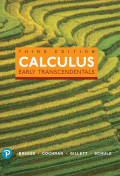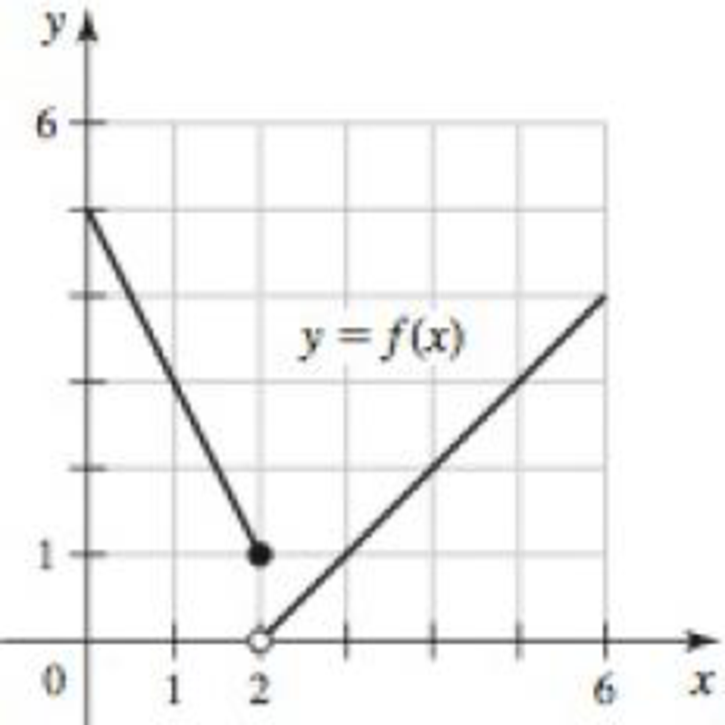
Concept explainers
Precise definitions for left- and right-sided limits Use the following definitions.
Assume f exists for all x near a with x > a. We say the limit of f(x) as x approaches a from the right of a is L and write
Assume f exists for all x near a with x < a. We say the limit of f(x) as x approaches a from the left of a is L and write
42. Determining values of δ from a graph The function f in the figure satisfies
- a. |f(x) − 0| < 2 whenever 0 < x − 2 < δ
- b. |f(x) − 0| < 1 whenever 0 < x − 2 < δ
- c. |f(x) − 1| < 2 whenever 0 < 2 − x < δ
- d. |f(x) − 1| < 1 whenever 0 < 2 − x < δ

Want to see the full answer?
Check out a sample textbook solution
Chapter 2 Solutions
Calculus: Early Transcendentals (3rd Edition)
Additional Math Textbook Solutions
Calculus for Business, Economics, Life Sciences, and Social Sciences (14th Edition)
Elementary Statistics: Picturing the World (7th Edition)
A First Course in Probability (10th Edition)
Pre-Algebra Student Edition
Introductory Statistics
Thinking Mathematically (6th Edition)
- Find the indefinite integral by making a change of variables. (Remember the constant of integration.) √(x+4) 4)√6-x dxarrow_forwarda -> f(x) = f(x) = [x] show that whether f is continuous function or not(by using theorem) Muslim_mathsarrow_forwardUse Green's Theorem to evaluate F. dr, where F = (√+4y, 2x + √√) and C consists of the arc of the curve y = 4x - x² from (0,0) to (4,0) and the line segment from (4,0) to (0,0).arrow_forward
- Evaluate F. dr where F(x, y, z) = (2yz cos(xyz), 2xzcos(xyz), 2xy cos(xyz)) and C is the line π 1 1 segment starting at the point (8, ' and ending at the point (3, 2 3'6arrow_forwardCan you help me find the result of an integral + a 炉[メをメ +炉なarrow_forward2 a Can you help me find the result of an integral a 아 x² dxarrow_forward
- Please help me with this question as I want to know how can I perform the partial fraction decompostion on this alebgric equation to find the time-domain of y(t)arrow_forwardPlease help me with this question as I want to know how can I perform the partial fraction on this alebgric equation to find the time-domain of y(t)arrow_forwardEvaluate F³ - dr where ♬ = (4z, -4y, x), and C' is given by (t) = (sin(t), t, cos(t)), 0≤t≤ñ .arrow_forward
- Algebra & Trigonometry with Analytic GeometryAlgebraISBN:9781133382119Author:SwokowskiPublisher:Cengage


